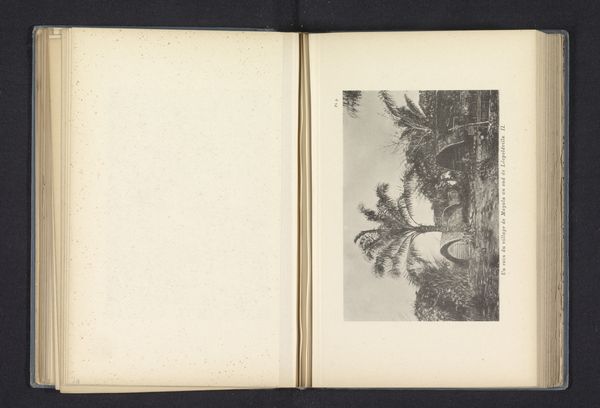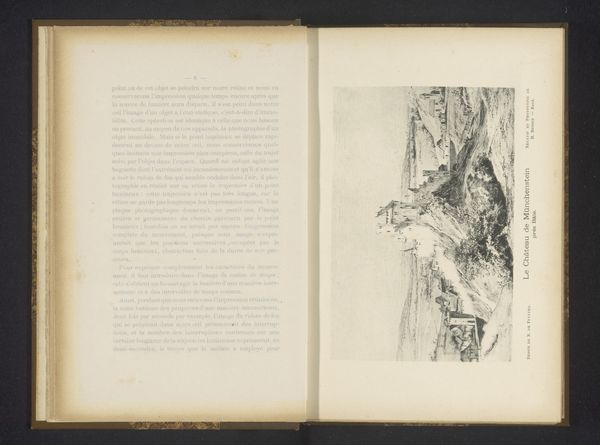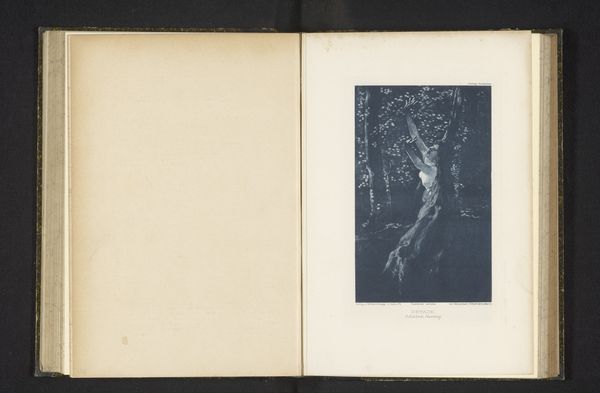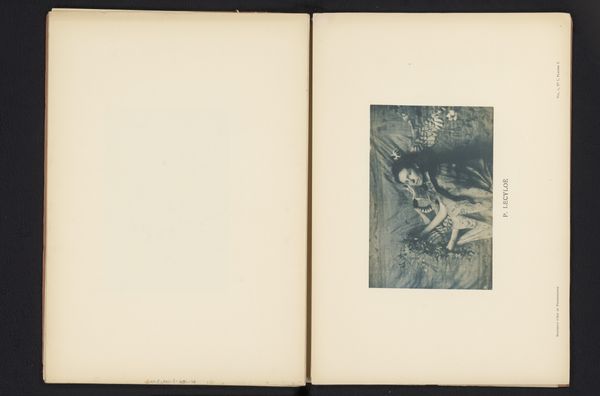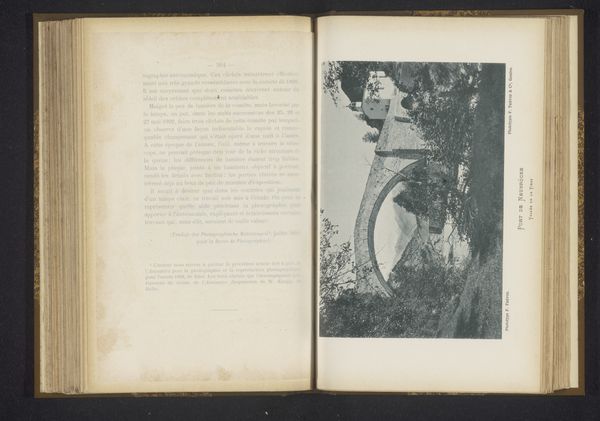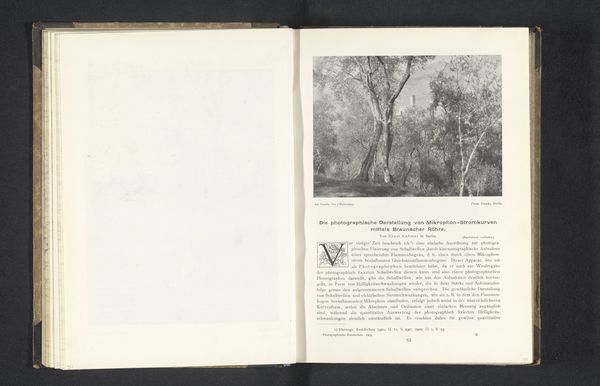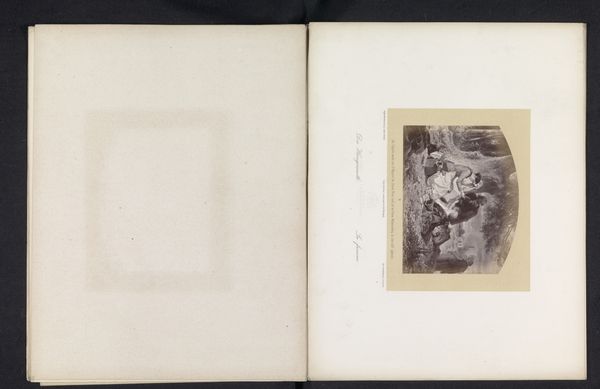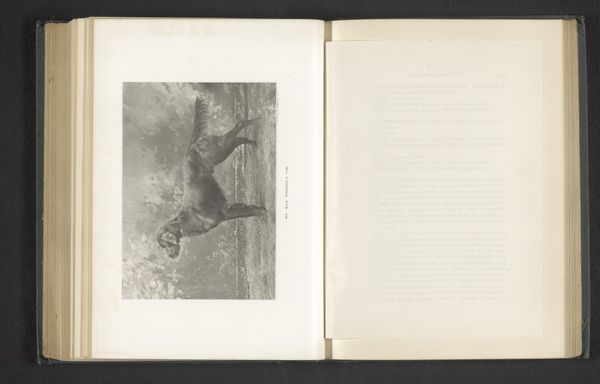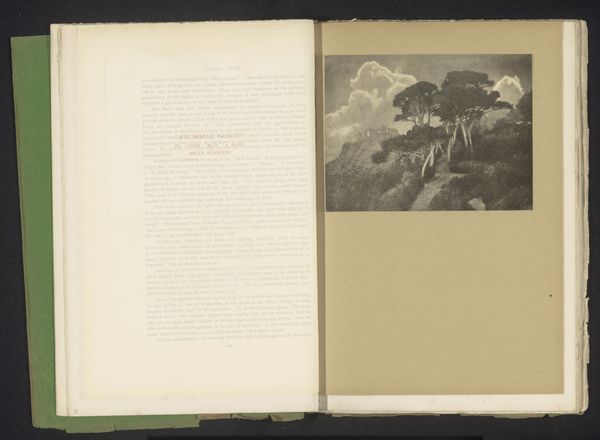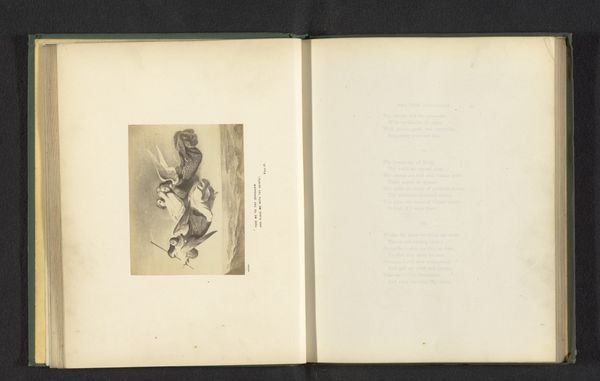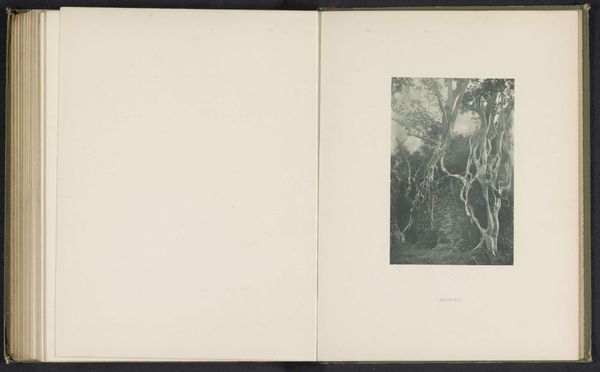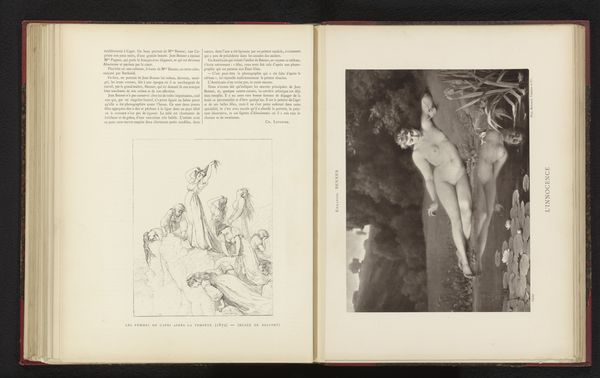
Fotoreproductie van een schilderij door Wilhelm Kuhnert, voorstellend twee apen before 1898
0:00
0:00
tempera, painting, print
#
animal
#
tempera
#
painting
# print
#
landscape
#
coloured pencil
#
orientalism
#
realism
Dimensions: height 179 mm, width 115 mm
Copyright: Rijks Museum: Open Domain
Editor: Here we have a print of a painting by Wilhelm Kuhnert, dated before 1898, depicting two monkeys. What strikes me is how the landscape almost looks like a backdrop in a theater. What can you tell us about this piece? Curator: It's important to examine this "reproduction" itself, beyond just considering the original painting that it documents. As a print, its existence hinges on industrialized processes of image-making and dissemination. How does its status as a *reproduction* rather than an "original" inform its value and function? Editor: So, instead of focusing on Kuhnert's artistic vision, we're looking at the social implications of the image being widely produced. Curator: Exactly! Consider the role of printmaking in circulating images of exotic locales and wildlife to a European audience. Kuhnert, a painter specializing in animal subjects, benefited from this increased accessibility. The print is a commodity circulated within a growing culture of consumption, catering to an appetite for adventure and the exotic, packaged for convenient consumption. How do you think it participated in shaping perceptions? Editor: Well, the "backdrop" feel definitely distances us from the reality of the animals' environment. Makes it easier, maybe, to see them as objects, or…performers. Curator: Precisely. Think, also, about the materiality of the print itself – the paper, the inks, the methods of its creation. Each contributes to the construction of this mediated encounter with nature, and is linked to exploitative economies of labor and resources in the 19th century. What does its survival and display in a museum context tell us about shifting value systems around art, labor and the natural world? Editor: It reframes how we see and understand these images, doesn't it? It makes us question the role this plays in larger economies. Curator: Exactly, and it also shows how materials carry social and cultural weight. I've never thought about the “means of production” in assessing pieces such as these. Thanks!
Comments
No comments
Be the first to comment and join the conversation on the ultimate creative platform.
